Keen readers of Viscount’s tales will know that the company jumped to attention on a Bank Holiday when the call came for an emergency hire organ at the Old Royal Naval College Chapel in Greenwich.
A few months later, in September 2021, I was asked to voice a Regent 356 at the chapel. This new organ has been installed for a more extended period of time, with a more comprehensive audio system, intended to serve the chapel’s needs while the state of its pipe organ is assessed.
There can surely be no better way of arriving in Greenwich than by boat. So it was that I decided to board the Uber Boat from Embankment Pier to Greenwich Pier, as the best way of getting unimpeded through London.
What fun! Much better than sitting underground on a tube train, or in a traffic jam. One was put in mind of the way that people used to get through London in the past – propelled by some oarsman through the turd-filled Thames of those days.
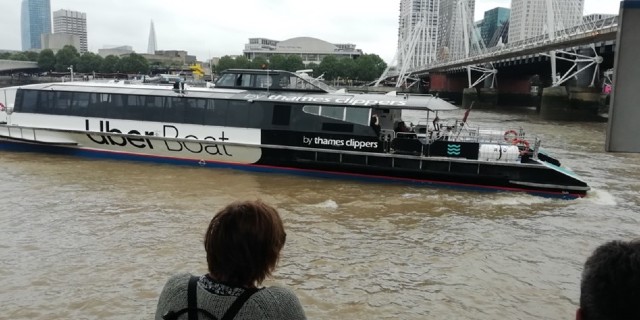
Voicing the Organ at Old Royal Naval College Chapel
The Old Royal Naval College Chapel is a splendid building, now sitting amidst the groves of the Trinity Laban Conservatoire and the University of Greenwich, an excellent source of musicians for the chapel’s music.
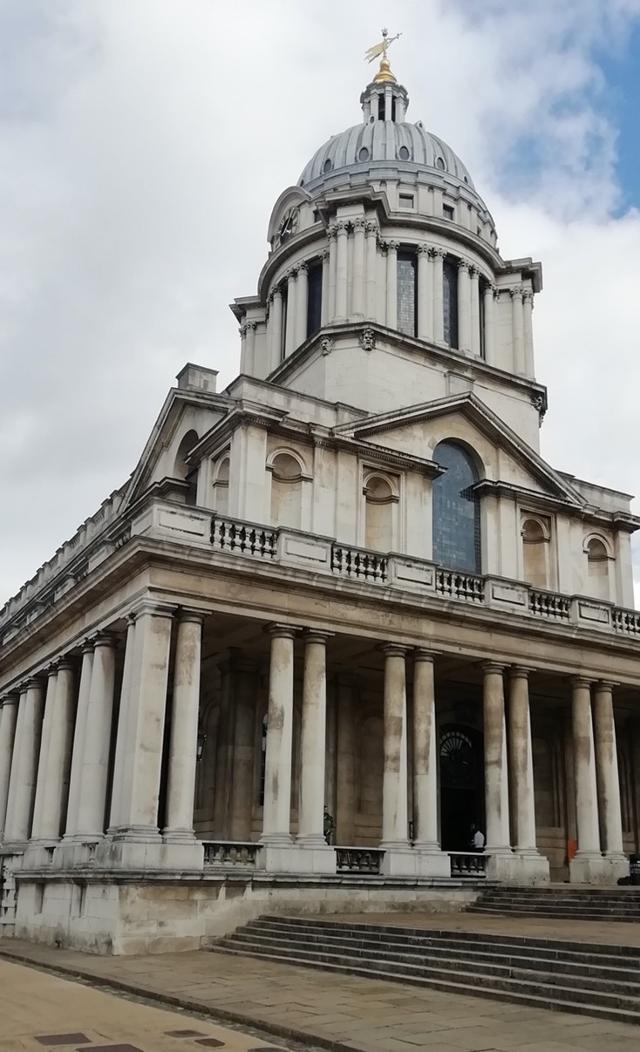
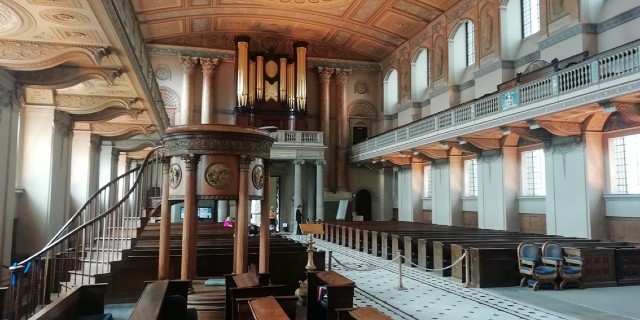
With a collegiate choir some 30 strong, led by the highly-regarded Ralph Allwood, MBE, the chapel is a place needing high quality musical resources.
Organist, Jonathan Eyre, had a very clear vision for the voicing of this digital instrument, having pointed me at the 1954 Walker at the London Oratory as a guide for the sort of sound he wanted to achieve. He’d sent me a few links to recordings in advance of the visit, which had given me a really good steer.
We were aiming for a neo-classically inspired English sound. Although it could be considered daunting to be given such a clear “I want it to sound like this” mandate, it’s much more rewarding to work like this than with only a vague idea of what is wanted.
Jonathan wanted Quintaton/Quintedena foundations available on both the Great the Swell, for example, bold mixtures suitable for playing baroque music, and a 4’ Schalmei on the Pedal for playing chorale preludes. He’d also asked for one of the Tuba stops on the choir (yes, there are two!) to be a big fat solo, while the other should be a chorus reed for the choir division.
The Organ and Placement of Speakers
The Regent 356 is a three-manual instrument with 56 speaking stops, and in this installation it was configured with 12 audio channels plus a sub-bass. The loudspeakers had been mounted in a long line in the gallery above the organ, so the first bit of work was to decide on a routing strategy for the divisions.
I decided to place the Great and Pedal at the end closest to the congregation, to provide a firm lead for singing, the Swell in the middle of the array, and the Choir at the end nearest the altar (and therefore almost behind the choir). The only thing that really departed from this concept was that I put the solo tuba on the Choir up front with the Great.
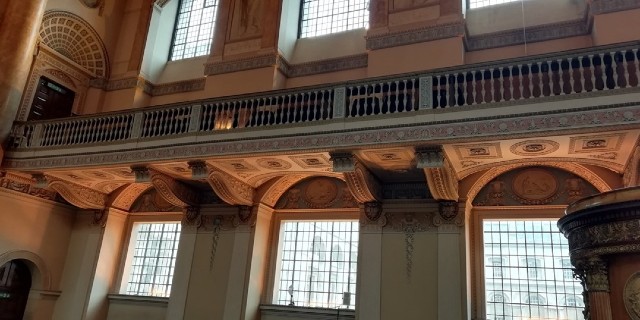
Tall Order Voicing a Three Manual Organ in a Day
Even with a certain amount of experience, it’s quite a tall order to voice a three manual instrument from scratch in a day, involving intense concentration and listening. (We’d agreed I’d do as much as I could to achieve Jonathan’s aims on this first day, and that I’d come back after a month or so to refine the voicing.)
You have to force yourself to take breaks in order to maintain some objectivity! There’s also a need to get out and about in the building in order to get a better impression of the balance and directional sound radiation in different parts of the space if possible. The internal recording sequencer is very useful in this respect.
The loudspeakers in question are quite directional at high frequencies, having horn drivers, so the impression on the opposite side of the choir was much more “in your face” than that underneath the gallery at the console. I found myself getting up in the gallery and angling the loudspeakers slightly towards the nave for this reason. Out in the nave the reverberation did a splendid job of blending all to create a harmonious whole, proving yet again that the acoustics of the building are the most important stop on the organ.
Another major challenge is balancing overall loudness at different locations—and here it was a tussle between things being too overwhelming in the choir area, or not loud enough at the back of the nave. Having the loudspeakers as high up as possible in the building helps to lessen this challenge to some extent.
Whatever, these are not new challenges in the world of organ building. The old pipe organ is at the west end, whereas the digital is at the east, so the previous situation is reversed for now.
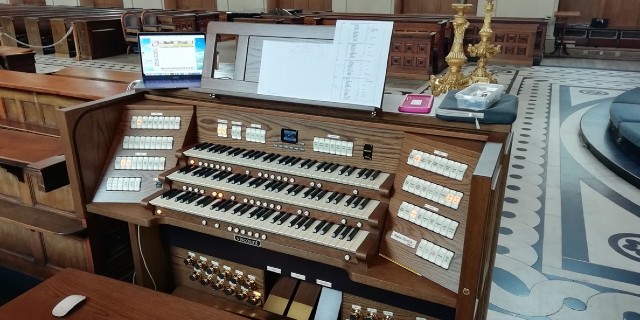
The Organ Sounding Impressive
The results by the end of the day were sounding impressive, and ready for the wedding that would be taking place the next day. I knew that they’d be having the Widor Toccata, so I’d tried that towards the end of the afternoon. The continental reeds that I’d used in places helped to add some fire.
On Sunday, Jonathan would be trying the organ with a congregation in full-throated hymn-singing mode—another excellent test—some “fine naval college hymns” would be aired apparently. I’m looking forward to the return visit.
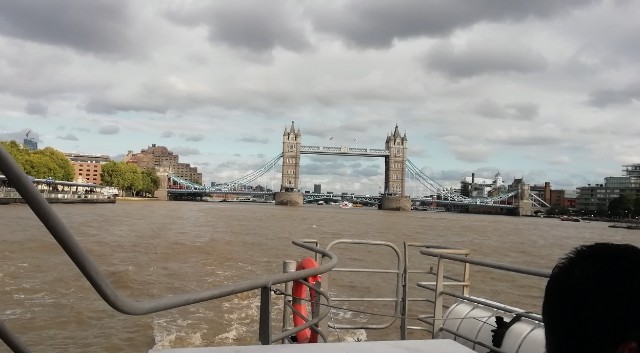

I’m a retired academic, with a background in music and audio engineering. I’m currently a consultant for Viscount & Regent Classic Organs, as well as being a freelance organist, including a role as organist/choirmaster at St Mary’s, Witney. I sing bass with Oxford Pro Musica Singers and the Cathedral Singers of Christ Church, Oxford.
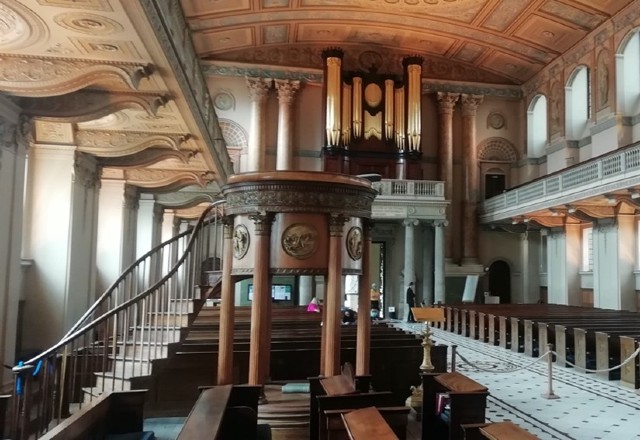



Sounds an excellent days 3 work Francis
I have a three manual Viscount Regent Classic.
I have recorded all JSBach, Krebs and many other composers.
You can find me on UTube.
I would be grateful if you spend a little time to listen and then let me know your views about my organ and it’s voicing.
Any thanks in anticipation.
Ivan Fowler